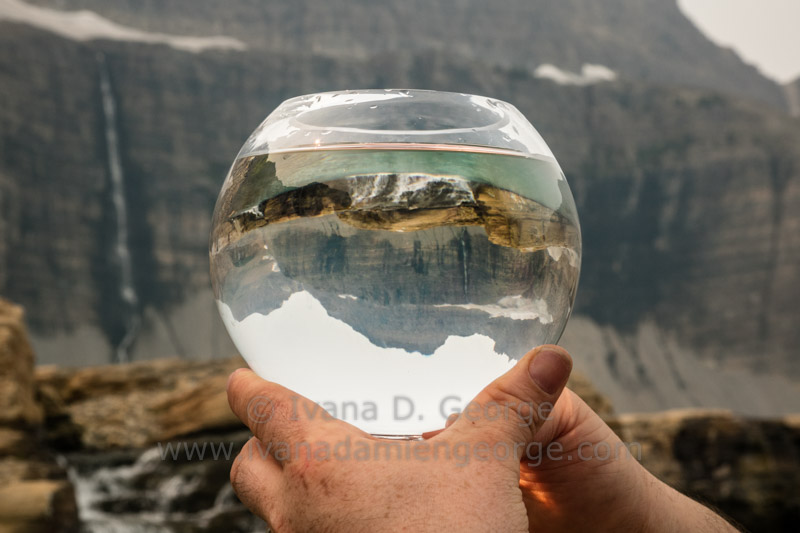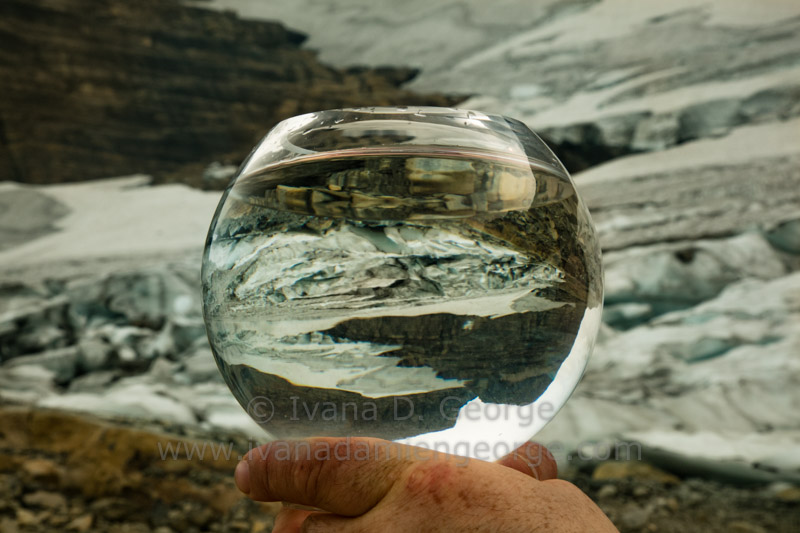Discover how I made art on the edge of the ice at Grinnell Glacier
/Click here to add these new artworks to your art collection
This summer I had an incredible opportunity to visit Glacier National Park with friends and family. Prior to my trip I reached out to my academic network and was kindly connected to Dan Fagre. Dan is the lead climate scientist working for the USGS in Glacier National Park and has been conducting climate change research there for 24 years. He generously offered to guide me on a hike to Grinnell Glacier where he would be taking repeat survey photographs for his ongoing research. Dan took my husband Shane and me to the top of the mountain on a stunning hike. All along the path Dan pointed out interesting features of plants and geology. He said we were safer if we kept talking to deter bears from the path, so he gave us an amazing oral natural history lesson as we hiked. One of the most interesting features he showed us is pictured below. These dark circle shapes are fossils of the earliest multi-cellular plant life on earth! They were masses of an algae like plant that lived in shallow seas and made all the oxygen that we breathe today. How cool! They are so well preserved because they have been covered by the glaciers for eons and have only recently seen the light of day.
When we reached the glacier, Dan set about finding his exact spot where he last took a survey photograph using GPS data and prior images. My husband Shane helped me set up and take photographs with the water vessel.
What I learned from Dan has me very concerned about the effects of climate change on water resources downstream of the mountains. The recent drought in California is just the beginning of what could be a regular occurrence. Just like in my Glacial Waters project in Peru, these images depict a fragile American landscape held in hands within a bowl of water, asking the viewer to consider the importance of acting now to steward our natural resources and stop the worst feared effects of climate change from taking hold. You can learn more about Dan's work and the effects of climate change on water resources and biodiversity by reading the articles below.
Click here to add these new artworks to your art collection










